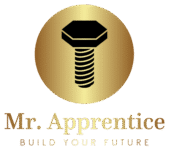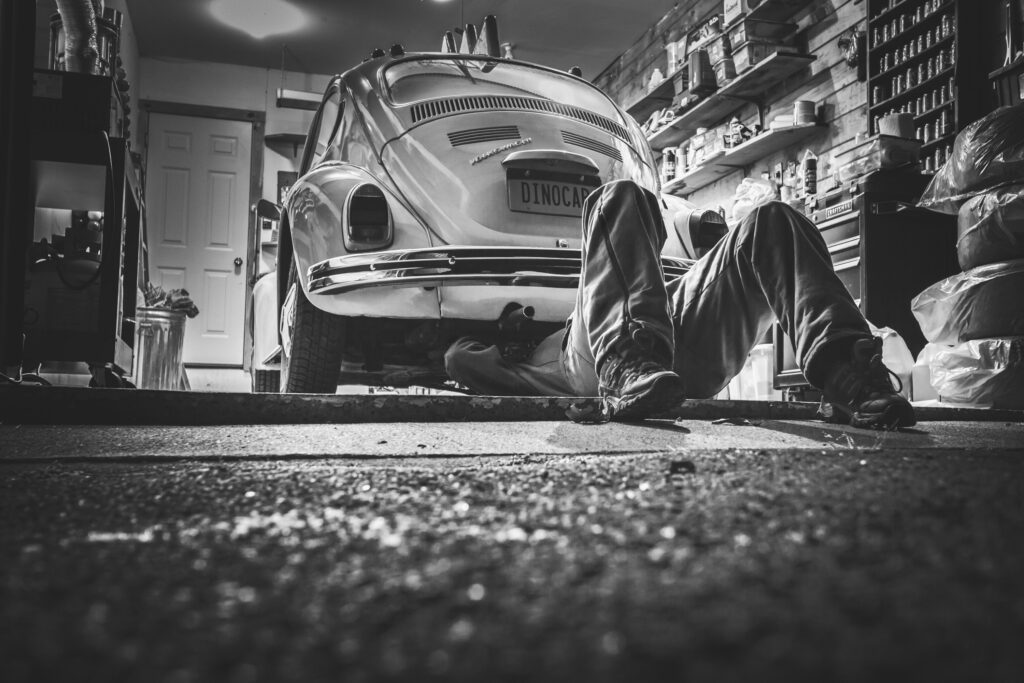Automotive technicians (mechanics) inspect, maintain, and repair cars and light trucks. They diagnose engine and electronic problems, replace worn parts,and perform regular service to keep vehicles running.
Key Duties:
- Read repair manuals and diagnostic computer outputs to identify vehicle issues
- Use tools and diagnostic equipment to test engine systems, brakes, steering, and electrical systems
- Repair faulty parts and perform routine maintenance
Training & Certification:
- Postsecondary certificate or associate’s in automotive technology
- Many employers prefer ASE (Automotive Service Excellence) certifications.
- Dealership or manufacturer training programs are also common.
Apprenticeship:
-
- Formal apprenticeships are rare; instead, on-the-job training is New technicians often begin as helpers or lube technicians and learn from master mechanics. Technical colleges often have partnerships with shops for co-op training.
Salary Range:
-
- ~$30k–$70k per year (median ~$49,670). ASE-certified technicians tend to earn towards the higher end.
Job Outlook:
- +3% growth (2023–33), about as fast as average. Demand for skilled techs remains steady despite some advances in vehicle reliability, thanks to more vehicles on the road.
Work Environment:
- Automotive repair shops (usually indoors). Technicians work with greasy parts and standing for long hours. Jobs can be physically demanding (lifting engines, crawling under cars). Safety measures and clean, well-lit shops help reduce risks. Typical workweek is full-time; evenings/ weekends common (many shops offer extended hours).
Pros & Cons:
- Pros: Steady demand (cars need repairs); variety of tasks (mechanical, electrical, computers); good pay for experienced techs; potential to specialize (performance, classic cars).
- Cons: Physically intense (manual labor, heavy parts); exposure to noise, grease, and chemicals; continuous learning needed (new vehicletechnologies, EVs); sometimes stressful deadlines and time
Path to Entry:
- Finish high school (take auto repair, electronics, math classes if available).
- Attend an automotive training program (community college or trade school certificate).
- Get ASE certification(s) (ASE is industry standard and often required).
- Begin work in a repair shop; learn on the job under experienced
- Continue training (dealership or manufacturer courses) and earn advanced ASE
Career Advancement:
- Master technician or shop foreman; service manager; specialty (engine builder, hybrid/EV specialist); open your own auto repair business; become an inspector or technical
Recommended Resources:
- ASE (Automotive Service Excellence): National certification exams for
- Automotive Technical Schools: g. Universal Technical Institute (UTI), local community college programs.
- Manufacturer Training Programs: Many auto brands sponsor technician
Video Resource: “Day in the Life of an Auto Mechanic” (trade school YouTube channels).
Diesel technicians service diesel engines in trucks, buses, and heavy equipment. They perform maintenance on large vehicles and machinery.
Key Duties:
- Diagnose issues in diesel engines, transmissions, and fuel systems
- Fix all issues
- Rebuild or replace diesel engines and special transmissions
Training & Certification:
- Certificate or associate’s degree in diesel mechanics plus on-the-job training
- Commercial driver’s license (CDL) is helpful for test-driving trucks.
-
ASE certifications in medium/heavy truck repair enhance job prospects.
Apprenticeship:
- Formal apprenticeships exist but many learn on the Employers may hire trainees who work under senior mechanics for 3–4 years. Technical colleges often partner with transit or trucking companies for training.
Salary Range:
- ~$40k–$90k per year (median ~$60,640). Because of specialized skills and heavy equipment, experienced diesel techs often earn above the auto mechanic range.
Job Outlook:
- +3% growth (2023–33) , about as fast as The need for freight transportation and vehicle maintenance keeps demand steady.
Work Environment:
- Diesel shops (garages) and outdoor Work is similar to auto repair but on larger scale: heavy lifting, noisy air compressors, and exhaust fumes. Safety is important (handling heavy parts, high shelves). Many shops operate extended hours, and technicians may work weekends.
Pros & Cons:
- Pros: High pay potential; demand in trucking, construction, and public transit; variety of work (repairing big rigs, constructionequipment, generators); good benefits often
- Cons: Physically demanding (lifting engines and wheels); exposure to diesel fumes and noise; requires broad skills (mechanical, electrical, hydraulic); irregular hours during emergency repairs.
Path to Entry:
- Finish high school (auto shop, math, diesel tech courses if available).
- Complete a diesel mechanic program or vocational
- Gain ASE medium/heavy truck certifications (ASE Diesel).
- Train under experienced diesel mechanics in a
- Obtain CDL (optional) to assist with road
Career Advancement:
- Lead diesel technician or shop supervisor; specialize (emissions control systems, mobile heavy equipment repair); diesel service franchise ownership; pursue education in heavy equipment operation or engine design.
Recommended Resources:
- ASE (National Institute for Automotive Service Excellence): Diesel and medium/heavy truck
- Diesel Training Programs: Diesel Tech schools (e.g. vocational colleges, CAT dealer programs).
- TechForce Foundation: Scholarships and industry info for diesel
Video Resource: “Diesel Mechanic Career Guide” (YouTube channels on heavy equipment).
Aircraft mechanics, also known as Airframe & Powerplant (A&P) technicians, maintain and repair airplanes and helicopters. They ensure aircraft airworthiness and safety.
Key Duties:
- Inspect and service aircraft engines, fuselage, landing gear, control surfaces, and electrical systems.
- Replace worn components (turbines, pistons, wiring); perform routine checks
- Troubleshoot avionics (navigation and communication systems); keep detailed logs for regulatory compliance
Training & Certification:
- FAA-certified Airframe & Powerplant license (A&P), which requires training at an FAA-approved school or 2 years of on-the-job experience plus exams.
- High school diploma and math/science courses are required to enroll in an A&P program.
Apprenticeship:
- Most mechanics attend FAA-approved aviation maintenance technician. Some airlines or maintenance companies offer apprenticeship pathways. Training includes thousands of classroom and hands-on hours.
Salary Range:
- ~$50k–$100k per year (median around $66k–$80k). Pay tends to be higher than auto mechanics due to the critical safety nature of the job.
Job Outlook:
- +5% growth (2023–33), about average for all occupations. Demand is driven by the number of aircraft and globaltravel needs; older technicians retiring also create
Work Environment:
- Primarily hangars and Technicians work at heights on wings and fuselages, often in varying weather. Jobs can be physically demanding and involve moving heavy parts (landing gear, engines). Safety is critical: technicians follow strict regulations and use protective gear. Shifts may include nights and weekends, especially at major airports.
Pros & Cons:
- Pros: High skill and respect; well-compensated; travel benefits (many airlines offer travel perks to employees); intellectually challenging work.
- Cons: Must meet rigorous certification and training requirements; safety-critical work with high responsibility; can be stressful(deadlines before flights); irregular hours due to flight
Path to Entry:
- Graduate high school (focus on math and physics).
- Attend an FAA-certified Airframe & Powerplant (A&P) school (typically 18–24 months).
- Study and pass the FAA A&P written and practical
- Gain experience and additional certifications (e.g. avionics, inspection authorization) as career
- Stay current with continuing education (recency of experience rules apply).
Career Advancement:
- Lead mechanic or inspector; specialized roles (avionics systems, turbine engines); supervisory or quality control positions; become an FAA-certified inspector or open an aircraft maintenance facility.
Recommended Resources:
- FAA Aviation Safety (faa.gov): Official requirements for A&P
- A&P Schools: Institutes like Embry-Riddle, local FAA-approved maintenance
- Aviation Organizations: AOPA (Aircraft Owners & Pilots Association) and Aviation Accreditation Board International (AABI).
Video Resource: “How to Become an Aircraft Mechanic” (aviation trade videos).

